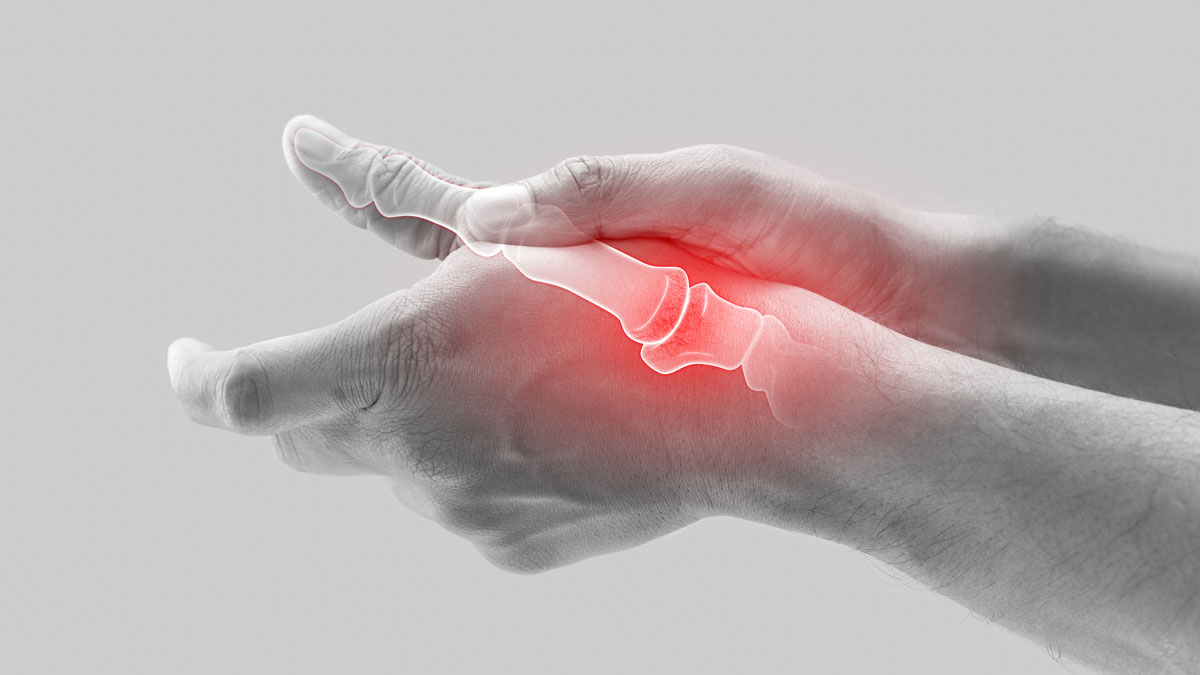Some of the muscles that control the hand are found within the fingers and, but there are a few located within the forearm, too. This is a good arrangement because otherwise our hands would be huge. Long tendons that reach into the fingers and thumb allow for sufficient dexterity so our slender hands can complete complex and intricate motions.
Extensor Pollicis Longus and Brevis Muscle Tendon Units
The extensor pollicis longus and brevis muscles are located in the lower forearm and allow you to extend your thumb, as you would if you were hitchhiking or signaling a thumbs-up, for example. When the thumb is extended, these two tendons pop up and are easily visible.
Take a moment now to extend your thumb to look at this area, noticing the following:
- You should see two tendons taut and standing out from the radial side of the wrist.
- The tendon closest to the index finger is the extensor pollicis longus. It is clearly a longer tendon, hence the name.
- The extensor pollicis brevis is the shorter one closer to the distal end of the radius.
- Together, they form a little depression that has been named the "anatomical snuff box."
An injury to either of these tendons can be very painful. These tendons are frequently injured in new mothers with infants and small children because they get in the habit of lifting the child from under the child's armpits. That motion is easy when the infant weighs six or seven pounds. But as the child grows, this action often strains one or both of the pollicis tendons.
The Flexor Pollicis Longus and Brevis Muscle Tendon Units
The flexor pollicis longus and brevis muscles are responsible for thumb flexion and allow you to grasp things and apply pressure with your thumb while performing massage and bodywork.
The short, brevis muscle is located in the hand itself and comprises one portion of the thenar pad, or thenar eminence. The longus muscle extends deep within the flexor aspect of the forearm.
Let's try to find them:
- Place your index or middle finger pad of one hand on the flexor surface of the thumb of the other hand between the distal and middle joints.
- Now try to flex your thumb. You should feel the flexor tendon get a bit taut.
- Then, place the tip of your index finger deep into the center of your thenar eminence and again try flexing your thumb to find the tendon more easily. You will feel the more proximal tendon becoming taut within the mound of muscle. Those are the two places that often get injured.
The Abductor Pollicis Longus and Brevis Muscle Tendon Units
Similarly, the abductor pollicis longus extends deep within the forearm, while the shorter brevis is located right at the thenar eminence. You use the abductors of the thumb when you move your thumb away from your fingers.
The tendon of the abductor pollicis longus is just anterior to the extensor pollicis brevis. It's both anterior to it and a little behind it, sort of hiding behind the extensor pollicis brevis tendon. This one is not as easy to palpate, but let's try:
- Bring your thumb into extension as you did before, holding your hand with your thumb pointing up toward the ceiling and the small finger pointing slightly down toward the floor.
- If you place the index finger pad of the other hand on the anterior surface of the extensor pollicis brevis and wiggle your thumb side to side, you should be able to feel the abductor tendon. This tendon is tough to find without practice and someone there to help you find it, so be patient.
Adductor Pollicis Muscle Tendon Unit
The antagonist to the abductor muscles is the adductor pollicis, which is responsible for bringing the thumb toward the index finger. This muscle has two parts or heads.
The oblique head originates from the bases of the second and third metacarpal bones (the index and middle fingers), as well as from several of the carpal (or wrist) bones. The transverse head originates at the anterior surface of the third metacarpal. Both portions of the muscle attach on the medial side of the thumb, inserting into the base of the thumb and the tendon of the extensor pollicis longus.
This is one of the most important muscle-tendon units of the thumb. Imagine trying to pick something up without the ability to adduct the thumb, or picture what it would be like to perform any petrissage massage motion without it.
In addition to the extensors, flexors, abductors and adductor, there are two important muscles involved in the movement of the thumb.
The small, triangular opponens pollicis is responsible for flexing the thumb's metacarpal bone at the CMC joint. This muscle works hard when you squeeze your thumb pad against the finger pad of your pinky, and lies within the thenar eminence, along with the flexor pollicis brevis and abductor pollicis brevis.
The other muscle is the first dorsal interosseous, which lies between the thumb and the first metacarpal (or index finger). This muscle primarily acts upon the index finger, but also assists the adductor pollicis in thumb adduction.
